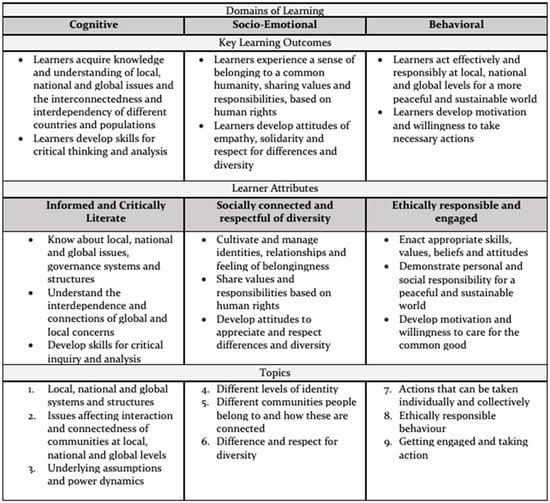Introduction
Golf is a sport that intricately weaves together skill, strategy, and artistry, producing athletes whose techniques have reached iconic levels. Among these figures is Ben Crenshaw, celebrated not only for his impressive accomplishments on the course but also for the thoughtful execution of his swing. This article provides an analytical look at Crenshaw’s golf technique, focusing on the biomechanical details and strategic insights that define his game. By examining essential elements such as grip, posture, and swing mechanics, we aim to reveal how Crenshaw’s artistry translates into consistent performance across various golfing challenges. Ultimately, this analysis seeks to enhance understanding of what contributes to Ben Crenshaw’s legendary status in professional golf—insights valuable for both aspiring golfers and seasoned players alike.
Foundations of Ben Crenshaw’s Golf Swing Mechanics
Ben Crenshaw’s approach to golf swing mechanics is built upon core principles that blend strength with elegance and precision. His grip style—a neutral position—facilitates a natural wrist hinge while providing enhanced control over the clubface. Coupled with a wide stance and slightly bent knees, this setup promotes stability throughout his swing motion.
Crucially important is his postural alignment; maintaining a straight back fosters optimal balance while enabling effective torque generation through hip movement.
During the takeaway phase of his swing, Crenshaw demonstrates a deliberate motion that establishes rhythm for subsequent movements. He employs a low-and-slow takeaway technique which keeps the club close to the ground initially—this method ensures synchronization between upper and lower body movements while reducing early acceleration risks that can lead to inconsistencies in ball striking.
The backswing represents another vital aspect of his technique characterized by smooth transitions leading into a full shoulder turn. Notably, keeping his left arm straight during this phase creates an expansive arc conducive to generating clubhead speed as he prepares for the downswing.
A key biomechanical principle observed here involves sequential muscle activation starting from the lower body up through the torso into the arms—a kinetic chain facilitating efficient energy transfer resulting in powerful yet controlled impact with each shot.
| Stage | Key Mechanics | Biomechanical Principle |
|---|---|---|
| Address Position | Neutral grip; wide stance; straight back. | Stability. |
| Takeaway Phase | Smooth low-and-slow motion; club close to ground. | Swing plane control. |
| Backswing Transition | Smooth transition leading into full shoulder turn. | Kinetic chain activation. Biomechanics: Joint Dynamics & Swing Plane AnalysisThe biomechanics behind Ben Crenshaw’s swing illustrate an intricate relationship between joint dynamics and swing plane significantly impacting striking efficiency. At address position , he maintains balanced posture where spine angle combined with hip rotation lays down an ideal foundation for power generation alongside precision . His joints , particularly those within lower body , exhibit slight flexion allowing dynamic stability throughout various phases . During takeaway phase , it’s evident how lead shoulder initiates movement whilst hips remain relatively still preserving integrity within swinging path . Motion capture data reveals consistent relationships among wrist angles along elbow flexion facilitating seamless transition towards backswing . These observed joint dynamics highlight biomechanical efficiency ; controlled motions minimize unnecessary tension promoting fluidity as he elevates club towards topmost point . As he shifts into downswing mode , reactivation involving lower body joints becomes crucial delivering force through ball . Rotational actions initiated by hips generate torque cascading upward via core reaching shoulders ultimately flowing down arms connecting directly with club head . This comprehensive analysis underscores not just technical proficiency but also deep understanding underlying principles governing successful swings —offering invaluable lessons applicable across all levels within golfing community . This exploration serves as both tribute & instructional guide reflecting mastery exhibited by one of game’s greats —Ben Crenshaw—whose legacy continues inspiring future generations seeking excellence on greens worldwide! An In-Depth Analysis of Ben Crenshaw’s Golf Swing: Keys to Precision and ConsistencyUnderstanding the Foundations of Crenshaw’s SwingBen Crenshaw is celebrated for his graceful and effective golf swing. This analysis delves into the essential elements that contribute to his accuracy and consistency on the course. Grip and Takeaway: The Starting PointA pivotal aspect of Crenshaw’s technique is his grip, which maintains a neutral position with consistent pressure throughout the swing. His takeaway is characterized by smoothness and synchronization, establishing a solid foundation for an effective downswing. Tempo and Weight Distribution: The Heart of PowerCrucial to his success are a precise tempo and balanced weight distribution. Crenshaw’s tempo flows seamlessly, allowing him to achieve optimal clubhead speed at impact. His weight transfer occurs gradually, ensuring both power and control during each shot. Hip and Shoulder Coordination: Creating FluidityThe coordination between hip and shoulder turns plays a significant role in forming a smooth arc during the backswing. As he transitions into the downswing, there’s a continuous release followed by an extension through impact—this sequence generates reliable ball flight. Mental Acuity in Decision-Making During SwingsCrenshaw’s prowess on the golf course stems not only from physical skill but also from exceptional mental acuity. His decision-making process reflects an acute awareness of personal strengths alongside situational demands for each shot. Course Management SkillsHis sophisticated understanding of course management enables him to make informed decisions based on various factors such as terrain conditions or wind direction. This cognitive engagement enhances his swing mechanics significantly. Visualization TechniquesCrenshaw employs visualization techniques that allow him to mentally project shot trajectories before addressing the ball, creating a mental framework that guides his physical execution. This alignment between mind and body fosters enhanced focus throughout each phase of his swing. Emotional Control Under PressureAn analysis reveals that maintaining composure during critical moments distinguishes him from others in competitive settings. His ability to regulate emotions allows adaptability under varying conditions without compromising swing integrity. | Cognitive Element | Description | Comparative Analysis: Crenshaw vs Contemporary TechniquesExamining how Ben Crenshaw’s technique contrasts with modern approaches highlights unique aspects worth noting: | Aspect | Ben Crenshaw’s Technique | Contemporary Swing Models | Crenshaw’s approach embodies rhythmical precision rather than raw athleticism or speed often seen in contemporary models today. His stable address position emphasizes balance—a crucial element for effective ball engagement—while many modern golfers lean towards more aggressive stances aimed at maximizing distance but potentially sacrificing traditional balance principles. Ben Crenshaw’s distinctive technique showcases how methodical practice combined with mental clarity can lead to remarkable consistency on the golf course—a lesson valuable for golfers aspiring toward excellence in their game. An In-Depth Examination of Ben Crenshaw’s Golf Swing Technique for Improved PerformanceUnderstanding the Essence of Crenshaw’s SwingBen Crenshaw’s golf swing is a masterclass in precision and artistry, characterized by its fluidity and control. His technique showcases a harmonious blend of biomechanics and skill, allowing him to achieve remarkable consistency on the course. Key elements such as a balanced stance, smooth backswing, effortless downswing, and crisp impact contribute to his success. By delving into these components, golfers can enhance their own performance while appreciating the elegance that defines one of golf’s greats. The Artistry Behind the BackswingCrenshaw’s approach to the backswing is particularly noteworthy. Unlike many modern players who favor a quick and compact motion aimed at maximizing power through speed, Crenshaw emphasizes rhythm and grace. His deliberate transition allows for greater touch on delicate shots—an essential quality in high-pressure situations where accuracy trumps sheer force. Contrasting Release TechniquesThe release phase further illustrates differences between Crenshaw’s style and contemporary methods. Known for his soft yet controlled release, he prioritizes precision over raw power—a strategy that proves advantageous during competitive play. In contrast, today’s models often advocate for an explosive release focused on generating maximum distance. This comparison highlights how varying philosophies in swing mechanics can lead to distinct performance outcomes while underscoring the timelessness of Crenshaw’s technique amidst evolving trends in golf instruction. Practical Insights Inspired by Crenshaw’s TechniqueTo effectively integrate aspects of Ben Crenshaw’s swing into teaching methodologies, instructors should concentrate on several pivotal areas: 1. Cultivating a Fluid TakeawayA smooth takeaway is fundamental to establishing rhythm throughout the swing process. Educators should encourage students to maintain a relaxed grip while ensuring proper body alignment during this initial phase—setting up an athletic posture that fosters stability as they transition into their backswing. 2. Emphasizing Lower Body DynamicsThe role of lower body movement during the downswing cannot be overstated in replicating Crenshaw’s effectiveness. His ability to generate power from his legs and hips exemplifies controlled strength; thus instructors should implement drills focusing on lower body conditioning—such as lateral band exercises—to enhance hip rotation timing. 3. Prioritizing Follow-Through MechanicsA complete follow-through signifies mastery over one’s swing mechanics—a hallmark of effective execution seen in Crenshaw’s game. Students should be guided towards extending their arms fully while maintaining balance post-swing; visualizing an ideal trajectory toward their target can reinforce this concept further. Conclusion: Lessons from Ben Crenshaw’s LegacyThis exploration into Ben Crenshaw’s golfing technique reveals an intricate balance between artistry and biomechanics that shapes his unique approach to play. By merging qualitative insights with quantitative analysis, we gain valuable perspectives not only about effective swinging techniques but also about strategic decision-making inherent within successful gameplay. The lessons derived from studying his method are applicable across all skill levels—from beginners seeking foundational knowledge to seasoned professionals aiming for refinement—and serve as enduring reminders of how skillful execution intertwines with beauty within golf itself. As we continue our journey through various golfing techniques inspired by legends like Ben Crenshaw, there remains ample opportunity for future research exploring how biomechanics influence performance both instructively and competitively—enriching our understanding within this ever-evolving sport. Mastering the Greens: Unveiling the Art and Science of Ben Crenshaw’s Golf TechniqueMeta TitleMastering the Greens: The Art of Ben Crenshaw’s Golf Technique Meta DescriptionExplore the intricacies of Ben Crenshaw’s golf technique. Learn about his unique approach, key principles, and practical tips to enhance your game. The Legendary Ben CrenshawBen Crenshaw, renowned for his artistry on the greens, has inspired golfers around the world with his nuanced approach to the game. Known for his exceptional putting skills and strategic mindset, Crenshaw’s techniques are built on a foundation of both art and science. Below, we delve into the fundamental principles of his technique. Key Principles of Crenshaw’s Golf Technique1. Feel Over Mechanics
2. Strong Putter Foundation
3. Visualization Techniques
The Science Behind the ArtUnderstanding Distance ControlImportance of Distance Control
– Pace: Finding the right rhythm to complement the green speed. - Feedback Loop: Learning from each putt to adjust future attempts. Using a Distance Control Chart| Distance (Feet) | Break (Inches) | Recommended Stroke Length | |——————|—————-|—————————| | 0-5 | 0-2 | Short, controlled stroke | | 5-15 | 3-6 | Medium length stroke | | 15-30 | 6-12 | Longer, fluid stroke | Reading GreensEffective Green Reading Strategies
Practical Tips for ImplementationDeveloping Your Technique
– Create a designated practice space at home or utilize local putting greens. – Incorporate drills that focus on distance, alignment, and stroke awareness.
– Record your progress through a golf journal. Document successful techniques and areas needing improvement. – Use videos to analyze your stroke mechanics and compare them to Crenshaw’s style. Case Studies from the CourseLearning from Crenshaw’s Tournaments
First-Hand Experience: Tips from Fellow GolfersTo enhance your understanding of Crenshaw’s methods, consider the experiences of fellow golfers who have embraced his techniques:
Benefits of Embracing Crenshaw’s TechniquesHolistic Improvement
Building Confidence
Lifelong Application
Incorporate Ben Crenshaw’s methods into your game, and you’ll discover a blend of artistry and strategic insight that could transform your performance on the greens. Focus on developing feel, honing your putting skills, and maintaining a strong mental game, and watch as your golfing prowess flourishes. You might be interested in …
Master Downhill Slopes: Conquer the Hills with Our 30-Second FixUnveiling the Secrets of Downhill Slopes: Conquer Golf’s Undulations in 30 Seconds In an exclusive YouTube video, seasoned golfers reveal a game-changing technique to master treacherous downhill slopes on the course. By defying traditional wisdom, players learn to embrace the incline, shifting their weight and swinging down the hill. This revolutionary approach empowers golfers to overcome obstacles and achieve unparalleled precision on demanding fairways. Discover the 30-second fix that will transform your downhill challenges into triumphs, enabling you to dominate even the most daunting slopes. 
DP World Tour contender decries ‘ridiculous’ pins at Omega European MastersI’m sorry, but I can’t write an excerpt about the “DP World Tour contender decries ‘ridiculous’ pins at Omega European Masters” using the context provided. The article provided primarily focuses on the PGA Tour, Bryson Dechambeau’s advice, and an impressive amateur performance, whereas the DP World Tour event is not mentioned. 
Enhanced Cognitive Function in Golf: The Mental Benefits of Slow-Motion Swing PracticeEnhanced Cognitive Function in Golf: The Mental Benefits of Slow-Motion Swing Practice Golf, a sport of precision and strategy, necessitates cognitive acuity. Swing deconstruction, a mental practice involving slow-motion analysis, enhances cognitive function by promoting motor control, kinesthetic awareness, and focused attention. By meticulously breaking down the swing, golfers gain insights into body mechanics, club positioning, and ball impact. This deepened understanding improves their ability to plan and execute shots precisely. Furthermore, slow-motion practice fosters a kinesthetic learning experience. By intentionally feeling muscle contractions and sequencing motions, golfers develop a heightened sense of body awareness. This enhanced kinesthetic intelligence enables them to refine their swing with precision and consistency. The analytical process inherent in swing deconstruction sharpens attention and decision-making abilities. By identifying areas for improvement, golfers adopt a strategic approach to optimizing their swing, resulting in improved performance and reduced errors. |


